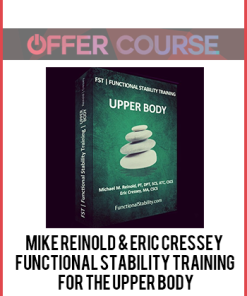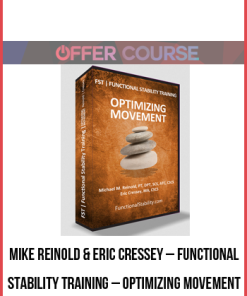Bodyweight Warrior – Flexibility training Program
$140 Original price was: $140.$42Current price is: $42.
Delivery Method: After purchase, you can download the digital content and access your courses anytime, anywhere, on your computer, tablet, or smartphone
Achieve deeper mobility and lasting flexibility with Bodyweight Warrior’s Flexibility Program. Train smart, build joint strength, and move freely—without sacrificing control or stability.
Bodyweight Warrior – Flexibility training Program
Where To Start With Flexibility? (Routines For Beginner to Advanced)
Developing flexibility is not something that happens overnight, over a few days, or even weeks for that matter. Like any training pursuit, the key is a combination of using the right tools and long term consistency. This guide is meant to help provide some clarity and direction so you can think less and do more. If you want some more specific guidance and programming I would recommend joining Trybe with over 100 routines, 400 exercise demos covering all those core flexibility goals, handstands, fundamental strength, bodyweight skills, and more.
The basic formula
Greasing the Groove
Flexibility isn’t something that just comes about after a little stretching, you need to either use it or lose it. For this reason, it is useful to have some sort of daily, or close to, greasing the groove and using the range of motion. This can just be part of your regular training or day to day activities if you’re required to use your flexibility such as with bodyweight training. Where this isn’t the case and you’ve spent a little too long sat watching Netflix (guilty!) then you need to artificially inject it in. This could be the quick and simple like the 5 minute morning mobility routine or a little more comprehensive 20 minute beginner routine. I also like more dynamic techniques like leg kicks and arm swings. Do it first thing in the morning, as a work break, post training or before bed. The important thing is to do!
Focused Intensity
General stretching is great for greasing the groove (GtG) but is slow to develop flexibility long term because the adaptation is broad and therefore you make small progress in many facets. To speed things up it is essential to add some focused and higher intensity stretching. In most instances, THIS is the cake and the GtG is the cherry on top. These sessions will provide the biggest jumps in range of motion and progress with the GtG keeping things ticking over between. These sessions can be chosen based on your goals whether that is developing a better pike, splits, pancake, or anything else between.
The End Result
Combining the above two recommendations makes for a simple and minimal approach to developing flexibility that can easily be added to your current training plan as a modular extra. The intense sessions are generally done 2x per week but a third session can be added if wanted but more does not mean better. Here is an example of a rough week of training.
The above recommendations are great but generic. Here are some specific examples for various goals.
example 1: beginner
As a beginner, it does not necessarily mean you’re tight but just new to stretching but the two tend to go hand in hand. The most important thing is to start doing and learn to better tolerate the stretch reflex. Stretching isn’t fun (depending on your level of masochism) and will be uncomfortable. Much of getting more flexible initially comes from being better able to tolerate the stretch reflex, otherwise known and Embracing The Suck!
For a routine, I would suggest following the above formula at a level you can manage. A good starting place would be using one of the beginners follow along routines as your GtG. This will complement the main focused intense session which would be targeted at developing the hamstrings.
I recommend using the hamstrings as the focus for beginners as improving this tends to help unlock the lower body and provide a good base to then develop other key patterns. I would suggest working on passing these 3 tests to develop a well rounded base of flexibility. The beginner hamstring flexibility routine is a great loaded routine and there is a 15 minute hamstring flexibility routine for those who prefer the follow along format. All together it would look something like this:
example 2: strength + flexibility (intermediate)
Once we begin to develop some basic levels of flexibility, we can move on to some more advanced techniques. This is my favourite way of incorporating flexibility training as a pairing of both strength and flexibility. These routines focus on developing mobility over flexibility. It is about building strength and control through a full range of motion.
This set up is based around an upper and lower body split being performed twice per week. These count as the intense and focused sessions so only a couple of additional GtG sessions would be needed on top. For most people this is where you’ll realise the potential for your flexibility and make great progress.
example 3: advanced positions
Now we get to the fun (or not so fun) stuff. Developing splits or advanced flexibility positions takes time. How long? Well I addressed my own personal progress in this video on how long does mobility take. It also requires specific work which is where this example comes in. The same above formula applies with some daily GtG and focused intense sessions for whatever your goals are.
I will add the links to specific routines below but I would recommend also watching the Do It Right series to get some form cue recommendations and check you’re training things optimally.
Combining everything together is where this can get tough. Below are a couple of example options. The first is for those wanting to achieve middle splits and pancake. As these positions are similar as share a common pattern they can be trained together following that 2x per week focus
If you wanted to add front split into the mix then I would suggest splitting sessions. This would follow a 3x per week structure where you alternate between workouts is an A B A B A B etc fashion.
Given enough time and using the principles written above, I believe you will make good progress towards your flexibility goals whether that is simply to touch your toes or sit in middle splits. People will progress at different rates but expect to be working on this for 3, 6 or maybe even 12 months before you get significant progress. I wish you the best of luck with your training 🙂
Bodyweight Warrior – Flexibility Training Program: Expand Your Range, Unlock True Movement Freedom
In a culture obsessed with strength and intensity, flexibility is often overlooked—or worse, misunderstood. The Flexibility Training Program by Bodyweight Warrior redefines what it means to move freely, powerfully, and with full control. This isn’t about touching your toes—it’s about cultivating a body that moves with fluidity, responds with grace, and resists injury through balanced strength and range.
Created by movement educator Tom Merrick, this progressive system helps you achieve functional mobility and deeper flexibility through intelligent programming rooted in bodyweight principles, mobility science, and consistent practice.
Whether your goals include achieving the front splits, unlocking shoulder range, or simply feeling more mobile and pain-free in everyday life—this course meets you with a structure that respects your starting point and challenges your potential.
What You’ll Gain from the Flexibility Training Program
This isn’t a follow-along stretch video. It’s a methodical, education-based framework that empowers you to take ownership of your mobility journey through measurable progress and body awareness.
Core Components of the Program:
Science-Based Mobility Progressions
Move beyond passive stretching into active range development, joint preparation, and end-range strength—so your flexibility becomes usable, not just aesthetic.
Full-Body Flexibility Focus
From hips and hamstrings to spine, shoulders, and ankles—you’ll train the entire system to function in harmony rather than isolation.
Balance Between Strength & Flexibility
Develop stability and tension control at extended ranges to support athletic performance and minimize injury risk.
Personalized Intensity Scaling
Accessible for all levels, with regressions and progressions designed to meet you where you are—whether you’re stiff as a board or already bendy.
Integrated Warm-Ups & Recovery Routines
Learn how to properly prep your body for mobility sessions and integrate recovery to enhance adaptation and long-term gains.
Bonus Routines & Flow Sequences
Explore additional tools like flow-based mobility, resistance band drills, and joint articulation sequences to enhance variety and depth.
You’ll not only gain range—you’ll own it, with control, intention, and fluid strength.
Who This Program Is Designed For
-
Individuals frustrated by stiffness or recurring mobility limitations
-
Athletes, movers, and yogis seeking to deepen range without sacrificing strength
-
Desk workers aiming to reverse postural restriction and restore natural movement
-
Calisthenics or bodyweight practitioners who need improved joint function
-
Anyone who wants to move with more freedom, ease, and joint integrity
If you want more than short-term flexibility tricks—and you’re ready for a sustainable system—this course is built for you.
About Bodyweight Warrior (Tom Merrick)
Tom Merrick, the creator behind Bodyweight Warrior, is known globally for translating complex mobility science into accessible, actionable content. With years of coaching, experimentation, and evidence-based practice, Tom’s mission is simple: to help people move better, live better, and experience strength that feels as good as it looks. His calm, clear teaching style and highly structured approach have earned him a loyal following of practitioners who prioritize both form and function.
Why This Flexibility Program Stands Out
-
Not Just Stretching—Skill Development – Flexibility is trained with intention, mechanics, and purpose
-
Designed for Longevity – Built to serve your body for life, not just short-term gains
-
Bodyweight & Equipment-Free Options – Train at home or anywhere with minimal setup
-
Progress Tracking Built In – Measure gains in real-time with structured protocols
-
Movement That Supports Movement – Every session improves how you move, train, and recover
Don’t Just Get More Flexible—Get Functionally Flexible
With the Flexibility Training Program, you’re not just reaching further. You’re unlocking potential, recalibrating posture, and building a body that moves like it was meant to—fluid, capable, and resilient.
Your body is adaptable. It’s time to help it remember.
Be the first to review “Bodyweight Warrior – Flexibility training Program” Cancel reply
Related products
Sports & Fitness
Sports & Fitness
Sports & Fitness
Sports & Fitness
Sports & Fitness

 The Z-Health Team – Essentials of Elite Performance 2.0
The Z-Health Team – Essentials of Elite Performance 2.0  Vanessa Van Edwards – Ziva Mind Meditation
Vanessa Van Edwards – Ziva Mind Meditation  Olly Richards - French Uncovered (Beginner)
Olly Richards - French Uncovered (Beginner)  Natural Medicine Now Summit 2016
Natural Medicine Now Summit 2016 










Reviews
There are no reviews yet.